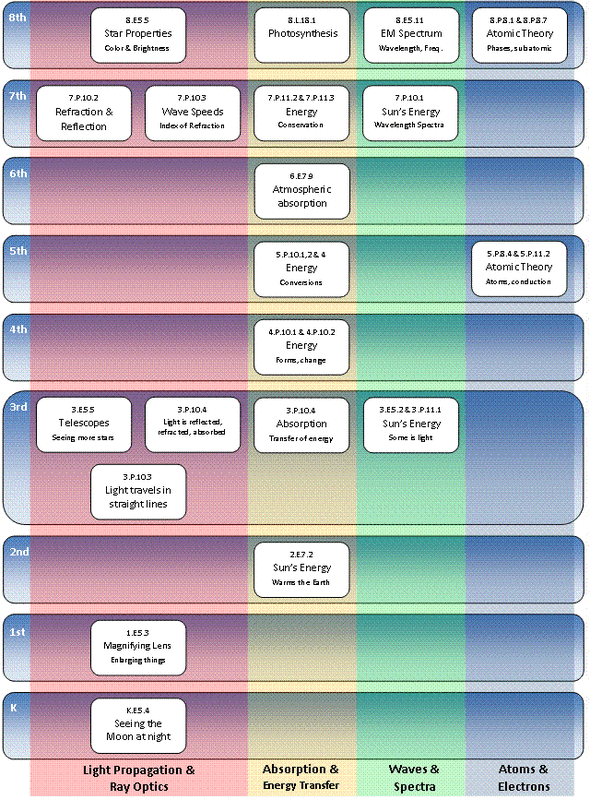In the short term, a teacher must adapt to the current state of affairs. For example, a 3rd grade teacher who is supposed to teach about the Sun being a source of different kinds of energy should notice that their students should have already learned that the Sun’s energy warms the earth and that the visible light emitted by the Sun illuminates the Moon at night, which gives a decent basis of at least two types of energy the Sun gives off. The teacher should also note, however, that not until four years later, in the 7th grade, will their students be presented with more thorough answers to this question in the form of wavelengths and that nowhere in between will those students be directly taught anything about what a wave or a wavelength is. An introduction to waves or at least to the spectra of color is probably necessary in addition to a general explanation that some of these invisible ‘colors’ still impact our lives through heat or sunburn. This adaptation serves to better connect with the student’s past and prepare them for future subject matter.
Of course, it would be best for science standards to be written with this connectivity of topic in mind in the first place. A transformation to address the issue of the Sun’s emission could be a change from what does the sun emit to an introductory discussion of color and the electromagnetic spectrum, which could then be related back to using the Sun as an example emitter. Young students would benefit from a highly conceptual science curricula based on providing educational experiences that set the stage for high school level rigorous lessons with mathematical structure. For example, it is likely that a Florida student’s first classroom experience with the reflection of light is a discussion about how they see the moon at night. Instead of focusing, as the existing standards suggest, on this specific example, the student would likely benefit from a more general discussion of things in nature that emit and reflect light and how we see them. Serving to draw connections between the ways in which they observe everything in their lives, a tie to past experiences and to the future topic of how light travels and interacts with matter can be created that would undoubtedly lead to more firm foundations of scientific understanding.
Here is a breakdown of optics material in Florida's Next Generation Sunshine State Standards in Science from 2008. K-8 is the focus and the pieces are broken up by vertical thrusts to emphasize the holes in continuity.

 RSS Feed
RSS Feed
